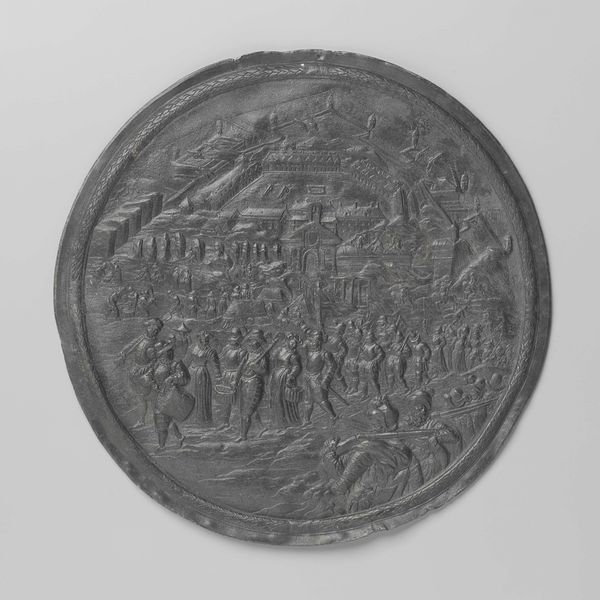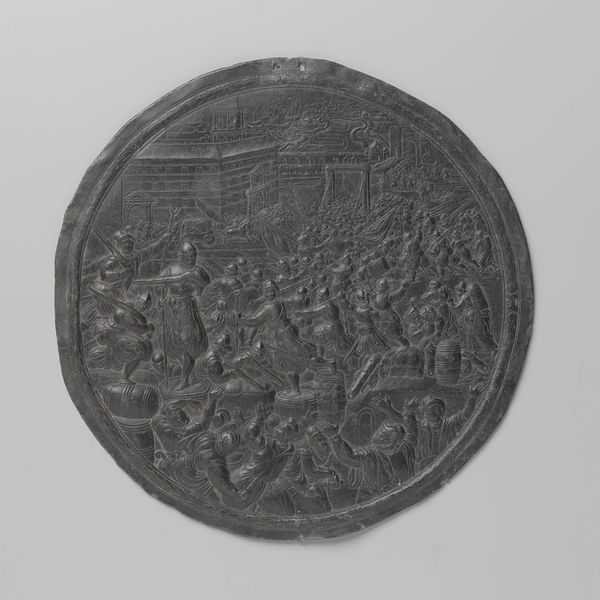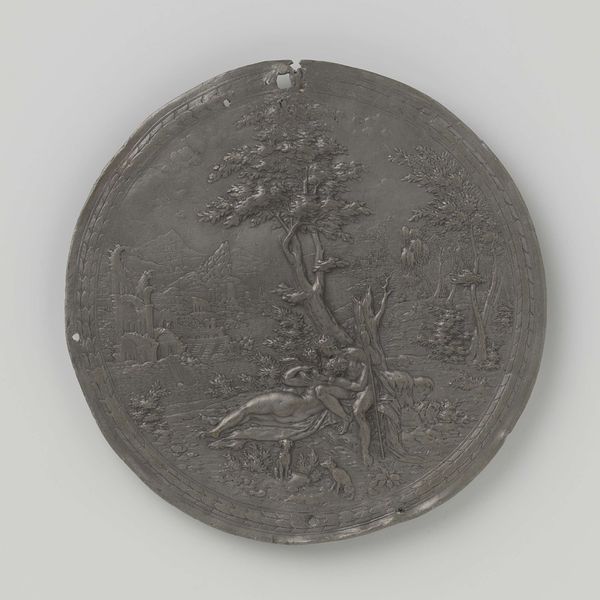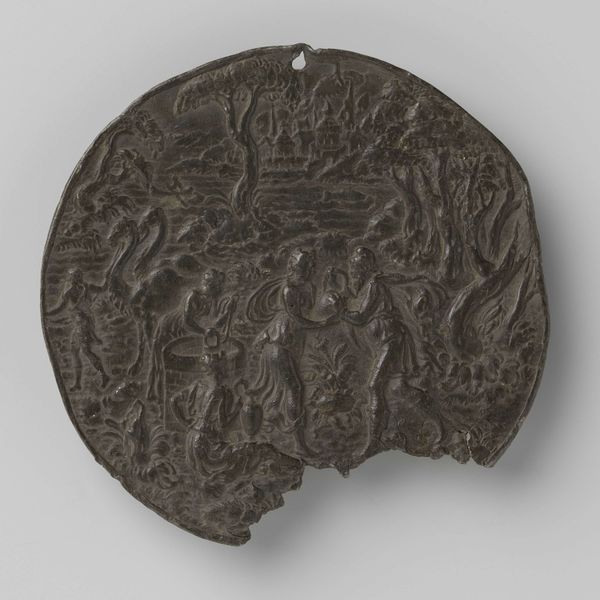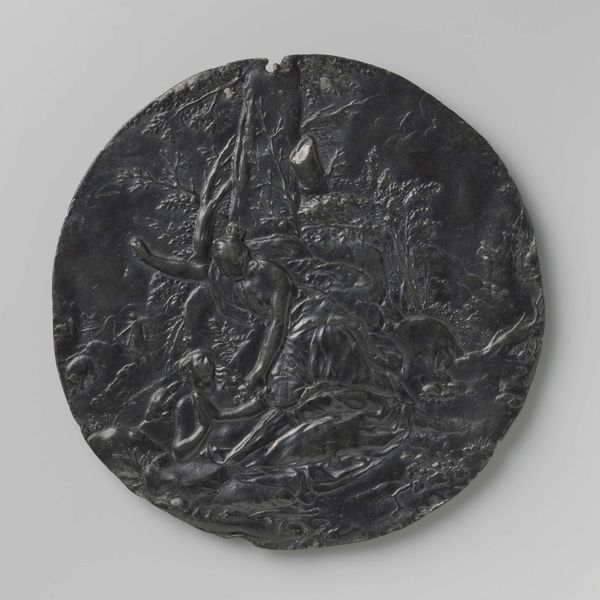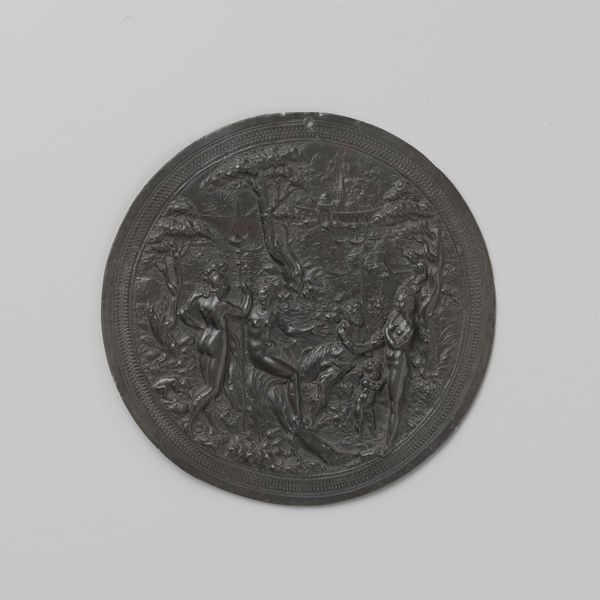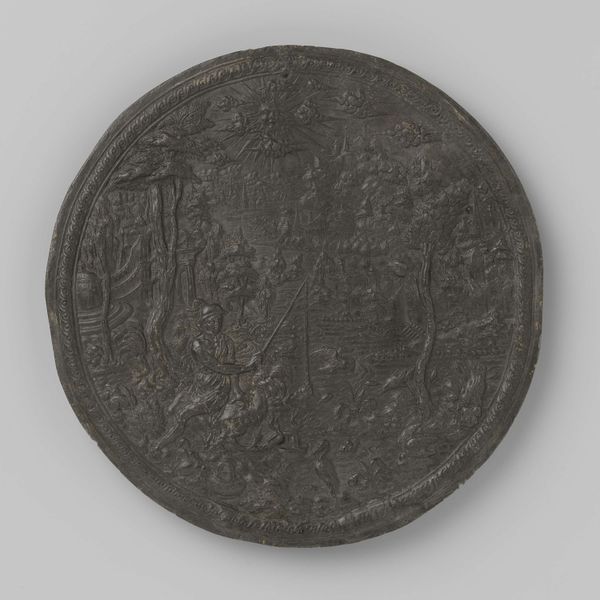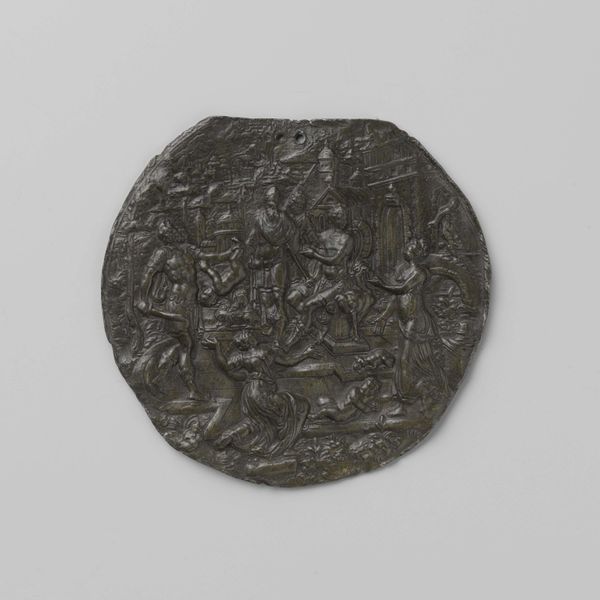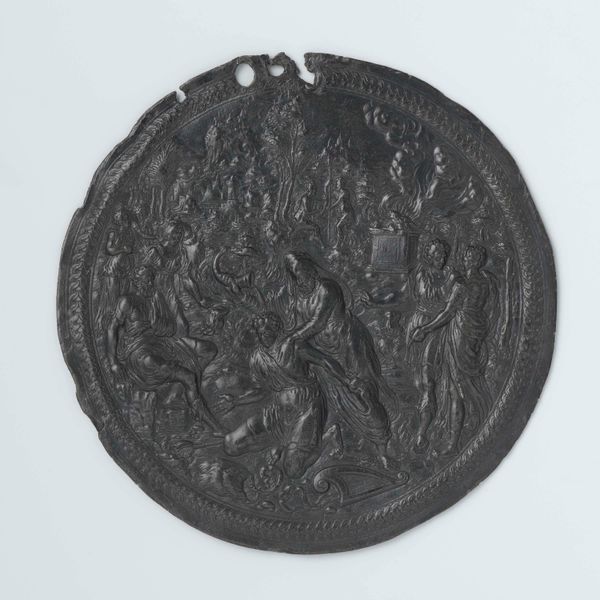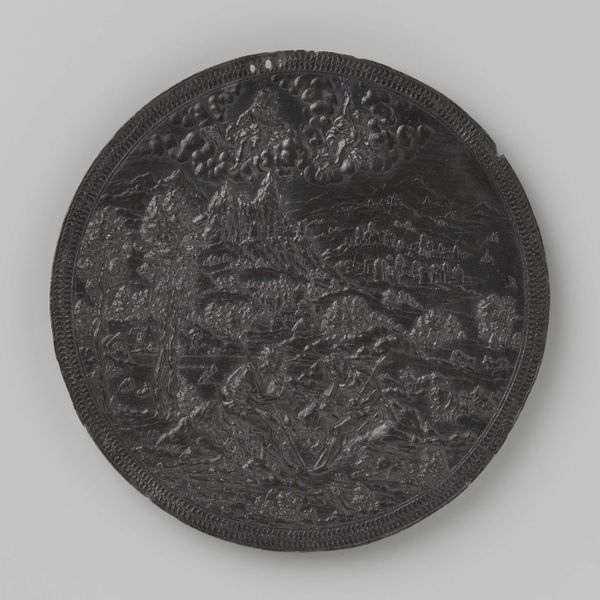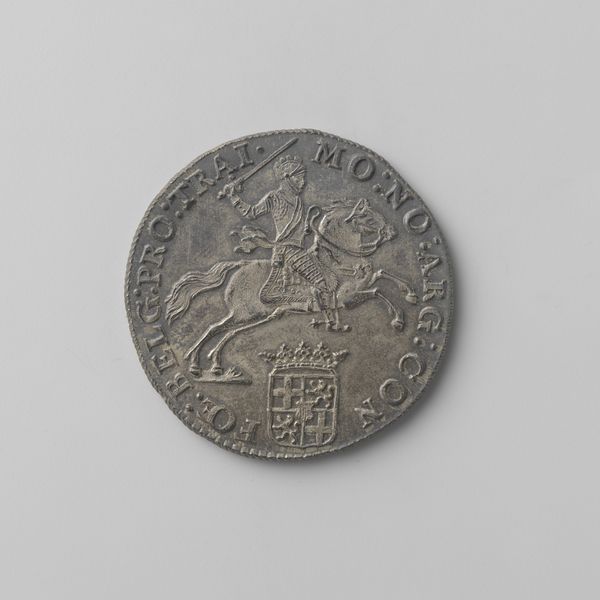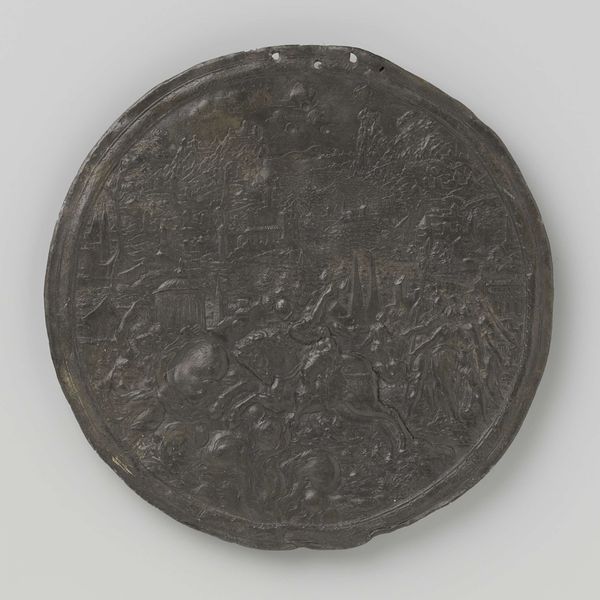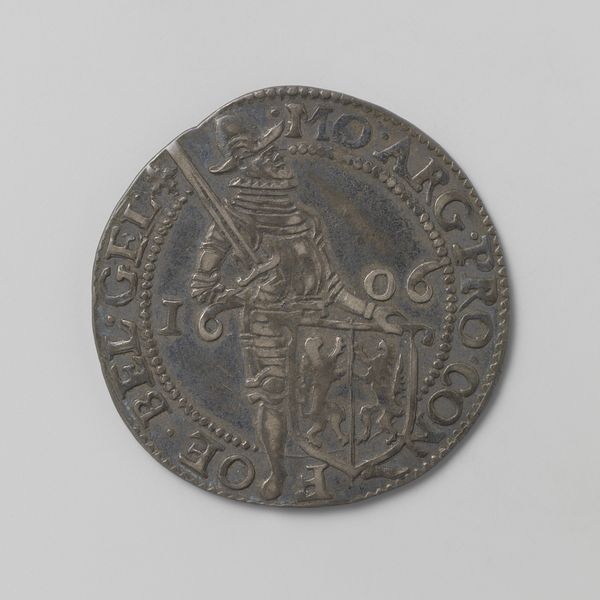
metal, relief, sculpture, engraving
#
medieval
#
narrative-art
#
metal
#
relief
#
geometric
#
sculpture
#
embossed
#
history-painting
#
engraving
Copyright: Rijks Museum: Open Domain
Editor: Here we have "Verdrijving van de vreemde troepen uit het kasteel," or "Expulsion of Foreign Troops from the Castle," an anonymous metal relief from after 1577, housed in the Rijksmuseum. It's incredibly detailed and dense; my initial impression is one of chaos and violence, contained within a stark, circular frame. How do you read this piece, considering the historical context? Curator: The chaos you observe is carefully constructed. This isn't just a depiction of violence; it’s a visualization of resistance. Considering the date, we must examine the work within the context of the Dutch Revolt against Spanish rule. What does the 'foreign' in "foreign troops" signify here? Editor: Obviously, the Spanish, and other groups fighting on their behalf. It was a period of great religious and political conflict... Curator: Precisely. This piece speaks directly to the power dynamics at play. The relief likely served as propaganda, mythologizing the Dutch struggle for independence. Notice the ways in which the artist chooses to depict the figures involved. What sort of biases are visually apparent? Editor: I see a clear distinction. The figures fighting seem frantic, whereas the people who appear to be winning are more regal in posture. This is an interpretation of an event, then, rather than objective reporting. Curator: Indeed! Art like this reinforces cultural narratives around national identity and justifiable revolt. How do you feel an artwork like this might impact perceptions of conflicts today? Are there echoes in contemporary art that deals with resistance and national identity? Editor: That’s an interesting point… I guess I never thought about historical objects being so… topical. It helps to see art this old reflecting ongoing conversations about who has the right to power and the ways it can be expressed visually. Curator: And in that sense, the struggles of the past remain very much present. Paying close attention to how those historical viewpoints affected both artists and audiences gives new and powerful meaning to artwork of the past and present.
Comments
No comments
Be the first to comment and join the conversation on the ultimate creative platform.
